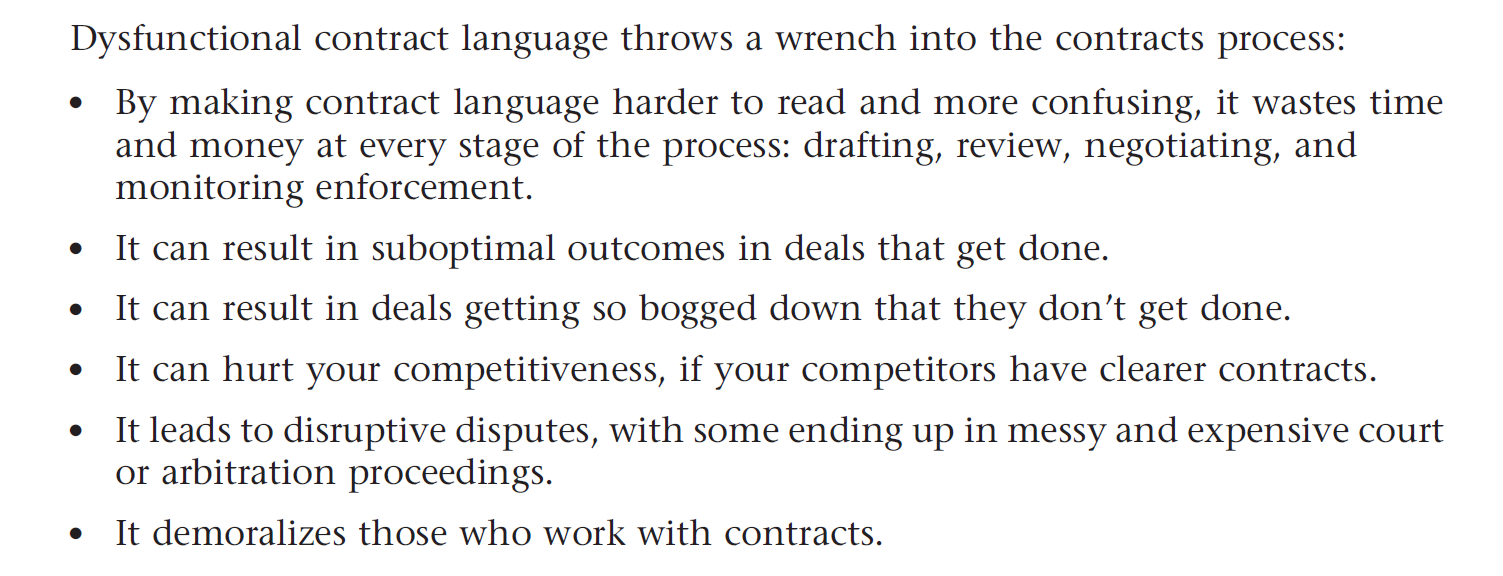An exchange of tweets by Ron Friedmann and Casey Flaherty (here) yesterday prompted much cocktail-party conversation on the state of the legal market, with an emphasis on the implications of the new variant of artificial intelligence known as ChatGPT. (I wrote about ChatGPT in this blog post.) A recurring theme in the discussion was the notion that contracts can be “good enough.” To eavesdrop on one illustrative exchange at that party—you can hear snatches of conversation and laughter, with The Girl from Ipanema playing in the background—there’s this Nir Golan tweet:
The question is does [a contract template] need to be [better than PLC templates]? For many professionals who will review/adapt, I suspect probably not. With budget constraints rising, for first drafts for templates or clauses, this may do but others do need it to come from a reliable source.
At one level, it’s unquestionably the case that contracts can be “good enough”: mainstream contract drafting is generally semiliterate and full of misbegotten conventional wisdom, yet the world of commerce chugs along.
But when it comes to whether contracts make sense in terms of what they say and how they say it, “good enough” comes at a cost. Here’s how the fifth edition (forthcoming) of my book A Manual of Style for Contract Drafting expresses the downside to dysfunctional contract language:
If all we have is dysfunction, then we make do with dysfunction. At the level of individual organizations, you don’t really have a choice—any given organization is unlikely to have on hand sufficient expertise to break free of copy-and-paste dysfunction. But as a profession, we ought to have a choice: it would be a straightforward matter to reap economies of scale by creating a centralized library of automated templates that not only allow users to create contracts faster and more cost-effectively but also result in contracts that are much better than the prevailing dysfunction. As I noted in this recent post, some companies are just starting to jockey for that market.
But in one respect, “good enough” makes sense. In creating a draft for a given transaction, you could seek an advantage in expressing every conceivable deal point, and you could gear up to negotiate all those points. But that can work to your disadvantage. The commentator who has best articulated this concern is Alex Hamilton, in his book Sign Here: The Enterprise Guide to Closing Contracts Quickly. Channeling Alex, here’s what Michael Fleming and I said in our 2021 article on reviewing contracts:
Consider staking out reasonable positions on deal points instead of seeking to wring the maximum advantage possible. Reasonable terms help you close deals faster, reduce the risk of your losing deals, and help foster long-term relationships. Those benefits tend to outweigh whatever you might gain through protracted negotiations.
So that’s the one context where keeping “good enough” in mind can work to your advantage. Invoking “good enough” to suggest we ought to be satisfied with dysfunction? No thanks.
(The notion of “good enough” in contract drafting has been around long enough that I wrote about it in this 2010 blog post and this 2011 blog post.)
[Incidentally, in addition to lingering on Twitter I’m also on Mastodon, at @AdamsDrafting@masto.ai.]


“Good enough” means no one really knows what trade-offs are in the documents. Sure, forms and legaltech forms companies do that all the time, aiming for a wide breadth of reasonableness and usefulness – in a vacuum. But that’s not legal advice.
Leaving broken language you’ve identified in a contract, such as passive voice, is no different than leaving in typos. What percentage of correctly spelled words is “good enough?”